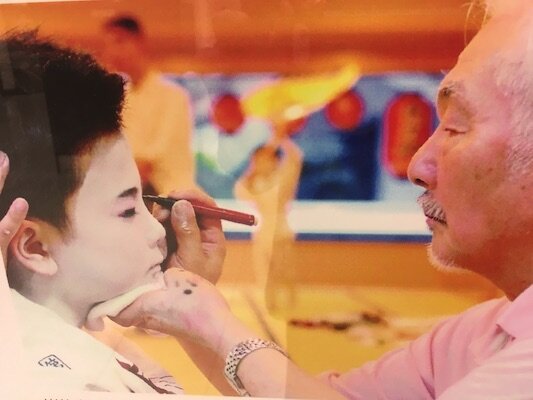KYOTO’S FESTIVAL OF TIMELESS ELEGANCE (Gion Matsuri)
There is no event quite as exhilarating or as elegant as Kyoto’s “Gion Matsuri”, a festival with great historical significance that takes place every year throughout July.
The festival’s name comes from the historic neighborhood of Gion, also the home to Yasaka Shrine founded over 1,350 years ago. Ironically, The festival dates back to 869 as a way to appease “an angry spirit” which was believed to have caused an epidemic that swept through every providence in the country.
Back then, as is now, the month of July was extremely hot, very humid, and prone to torrential downpours. This rainy weather formed ideal conditions for outbreaks of illnesses such as cholera, and malaria. However in those days, instead of the weather conditions at fault, the emperor believed that the angry spirit, or “disease-causing entity” was to blame, spreading illness to punish Kyoto.
Prayers were officially ordered by the emperor, to ask for deliverance and make peace with such a spirit, as well as traditional rituals, still performed today, all part of Japan’s indigenous, nature-based Shinto faith with the original purposes of purification and pacification.
Long processions of floats with halberds; one float for each region of the land, were also to be made. As well as every year since then, as per tradition, a local boy is chosen as a sacred messenger to the gods, called an “o-chigo-san”. For a Kyoto family, having one of their children selected for this role, is indeed a highly esteemed honor.
Once chosen, the child will undergo rigorous month-long purification rites, making them a better vehicle for the divine energies summoned during the festival. Rites such as only eating specially-prepared foods, as well as not allowing the child’s feet to come in contact with the ground, therefore, carried from place to place the entire month-long duration of the festival.
“O-Chigo-san”
The O-Chigo-san rides in the first float, the “Naginata-Boko” float in the procession, instantly recognizable by the halberd sword on top of its central pole, which according to legend possesses mystical, and healing properties.
An elaborate ritual with prayer on July 1st asking the many healing deities of Yasaka Shrine for divine protection, begins the Gion Matsuri’s festivities, with the most highly anticipated main events being the “Saki” Matsuri (early festival) procession on July 17, and the “Ato” Matsuri (later festival) procession on July 24th.
During the Saki Matsuri procession, deities leave the Gion area’s Yasaka Shrine, purifying and giving blessings throughout the city streets. One week later, during the Ato Matsuri, the procession will take the reverse direction, returning its deities to their home Yasaka Shrine.
The exquisite, intricately decorated festival floats of each procession are called “Hoko”, and the smaller festival carts “Yama”, collectively called “Yama-Hoko”, and due to their size and weight, can require up to 40 men to hand-pull the float through Kyoto’s main city streets. Each one contains deep spiritual significance which is related to its central neighborhood where it will be carefully constructed.
“Yamaboko-tate” is the special name given to the construction, and also for the displaying of the Hoko and Yama. Each year this revered event takes place out in the open, where for several days prior to the processions, visitors have the rare opportunity to observe master craftsmen still utilizing “no-nail” joinery that has been preserved and passed down through the ages.
It’s especially important to note, that the Hoko and Yama from each of the two processions are distinctly different, and all together total of 34 structures are still being made. Below, are photos of one of our absolute favorites, and perhaps the most unusual, the Ofuna-Boko of the Ato Matsuri procession, built uniquely in the style of an ancient ship, which is being constructed in the same spot as it has been for centuries, on Shinmachi Street, in the center of Kyoto.
Meticulously hand-built and elaborately decorated, each Hoko has its theme, and its own charm; with some floats reaching up to 25 meters (40 feet) in height, and weighing up to 12 tons.
Once their construction is completed, young traditional musicians will take their positions inside the Hoko, and perform for 3 consecutive evenings before, and also during both processions, each Hoko having its distinct arrangement of centuries-old music.
Since the Gion Matsuri is deeply steeped in tradition, religion, and history, a festival preservation society is constantly at work busily preparing for the Gion Matsuri event all year, restoring ancient textiles, and ensuring that each year’s festival continues to stay as close to the original as possible.
Each year, new groups of young musicians must be trained; with the festival music being an integral part of the event’s tradition. The music is quite often heard being practiced months and months in advance filtering from an open window in the areas of Kyoto where the Hoko will be constructed.
For well over 1,000 years, the Gion Matsuri festival has been a conduit for divine energy; serving as Kyoto’s prayer for the protection of its local people, and its international guests. A tradition of stability; celebrating health and well-being, providing us with needed courage in the face of adversity, and reminding us to live each day fully, Kyoto’s ever-shining triumph of spirit.
Kyoto’s Ofuna-Boko, a beloved symbol of resilience, and perseverance.
The GION MATSURI is a designated UNESCO Intangible Cultural Heritage Event.











